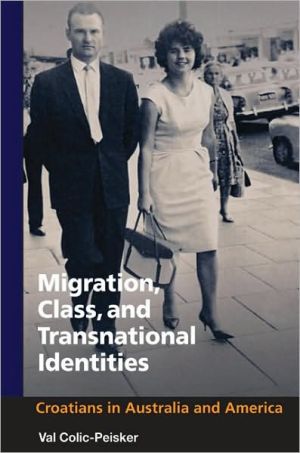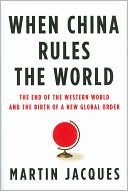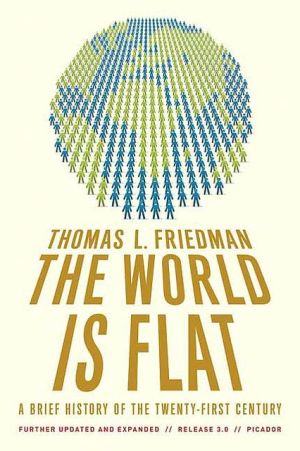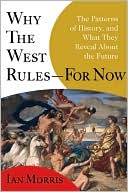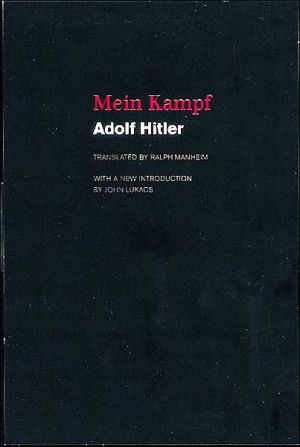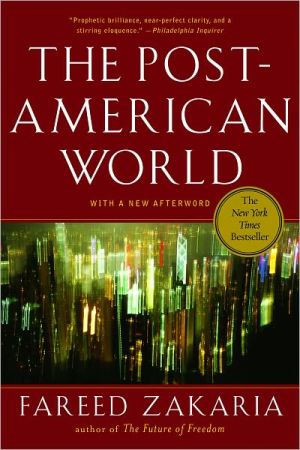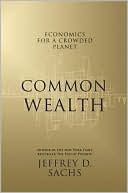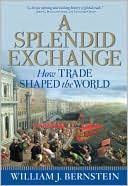Migration, Class and Transnational Identities: Croations in Australia and America
Harnessing concepts and theories from sociology, anthropology, and political science, this interdisciplinary study compares the vastly different experiences of two Croatian immigrant cohorts who have settled in the city of Perth in Western Australia. The populations explored represent an earlier group of working-class migrants arriving from communist Yugoslavia from the 1950s to 1970s and a later group of urban professionals arriving in the 1980s and 1990s as 'independent' or skills-based...
Search in google:
A sophisticated study of transnational migration from the Balkans to Western Australia
Migration, Class, and Transnational Identities\ Croatians in Australia and America \ \ By VAL COLIC-PEISKER \ UNIVERSITY OF ILLINOIS PRESS\ Copyright © 2008 Val Colic-Peisker\ All right reserved.\ ISBN: 978-0-252-03360-5 \ \ \ Chapter One\ The Homeland \ On a hot day in July 1997 I was walking down Zagreb's main street, Ilica, zigzagging through the crowd on the pavement, deafened by the iron clamor of trams passing by frighteningly close. I jumped into one and ended up pressed against a stranger, my nose filled with the summer smells of too many people cramped together in a small space. The unwanted intimacy triggered a typical Australian reaction to Europe: "This place is so crowded!" This was my first trip to Croatia after migrating to Australia. The emigrant's experience of "visiting home" included a strange mixture of feelings: wonder, bliss, familiarity, but also a trace of alienation and disorientation. Driving a car for the first time through familiar streets, they seemed narrow and curvy, something I had never noticed before. My friends' city apartments seemed to have shrunk, and the view from my parents' balcony on the eighth floor was dizzying. After only two years, my perceptions already had the imprint of life in a spacious Australian suburb.\ I enjoyed this natural experiment on how quickly and unmistakably place and space influence us. Unwittingly, I was a subject of the "experiment." I was just starting research on migration, transnationalism, class, and identity, and the first part of my data collection brought me back to my home country. In a book on migration it is important to know where the migrants come from, what their country is like, how they lived before they left, and what they were taught to believe and strive for. Visiting Zagreb libraries was somewhat of a culture shock. Accustomed to the efficiency of computerized Australian libraries, I had to retreat to the dusty business of browsing through card catalogues. In the modern, recently moved, and re-opened National and University Library, they did not let me in because I did not have a library card and I could not have one made for me because I did not have a current Croatian identity card. I had to smuggle myself in with a friend's card, the time-honored self-help method against the "Catch-22" of bureaucratic obstacles. At the very beginning of my research trip I realized, with the help of my old friends, that I had already lost some of the highly valued survival skills that are often needed in southeastern Europe. After the two-month crash course, I regained most of them and was able to bring fourteen kilograms of papers, photocopies, and books with me on the plane to Australia as hand luggage.\ This chapter, based on those fourteen kilos of paper, tries to answer the question "where do they come from?" for the two migrant cohorts that are the topic of this study. They, in fact, come from two significantly different social environments. The recent wave of urban professionals migrated from densely populated cities where, in contrast to the cities of the "new world," suburbs are usually high-rise and the city centers, built a century or more ago, project a historic rather than a business image. Old cathedrals and medieval bell towers dominate Croatian and other European urban centers, not the glass-and-steel business towers, the central business district's cathedrals of New World capitalism. In Croatian cities, the hectic traffic and the walking crowds coexist smoothly with a café culture developed to perfection; not being able to socialize daily with colleagues or friends in a favorite hangout means that something is seriously wrong with one's lifestyle. No professional community development projects are needed, but in turn the work ethic is problematic; well, one certainly would not place it among central cultural features. So different from Australia, I thought. In Croatian cities most people catch public transport to work and do their shopping in small corner shops that are literally just around the corner, a world where people live in the same house or flat for generations and know their neighbors well.\ These cities of Croatia are still peripheral in European terms, as the country awaits to be admitted to the European Union, but the spirit and glamour of the nearby West penetrates them through imported fashion, music, magazines, movies, cars, and shopping stints to Italy, Austria, and further. Croatian cities are in many ways different from the metropolitan areas of North America and Australia where many Croatians emigrated, but then again urban culture is increasingly global, with necessary adjustments to local circumstances.\ The other cohort—people who left Croatia in the 1960s—mainly came from the Dalmatian coast and islands, from small towns and villages. This is the type of environment that one can find in tourist brochures and advertisements: a glistening sea, bright blue skies, cozy inlets and white beaches with steep stony hills behind them ... and winds that blow the roofs away in winter when there are no tourists. This pristine heaven on earth, where in the past small parcels of rocky land could not feed large families, only emerged from poverty when discovered by hordes of western European tourists in the 1960s and 1970s. The majority of Croatian emigrants left their communities in "chain" or "cluster" migration, following their brothers, uncles, husbands, and fathers. Their villages and houses, their rosemary bushes and fig trees, their fishing nets and boats, and the smells and sounds of the sea have been forever remembered and always brought forward as a nostalgic point of reference. A city, whether in Germany, Australia, Canada, the United States, or even in their own country, could never become a real home for these people from face-to-face communities; everything is just too different. Regardless of the success of their settlement overseas, their villages and towns forever remained their "real" home, a powerful symbol of all things loved and lost, a source of identity, pride, and pain.\ Therefore, the two migrant cohorts described in this book come from the same country of origin, but at the same time from very different environments. At the time they migrated, their country was called Yugoslavia, and Croatia was one of its six federated republics. Yugoslavia was a communist country and therefore mentally, if not politically, part of eastern Europe. Geographically, Croatia was part of Mediterranean Europe. It lies along the eastern Adriatic coast and was historically associated with the Catholic southwest of Europe, especially Italy and Austria. This exposed the country to specific political and ideological influences. Yugoslavia as a whole had a peculiar position as a buffer zone between East and West during the cold war decades. Within this complex political and cultural environment, Croatian cities were subject to different ideological influences compared to rural areas. Religion and the traditional way of life remained predominant in the villages while the communist "re-evaluation of all values" swept through the cities after the communists came to power in 1945. All this made the two migrant cohorts—one rural and another urban—considerably different in terms of their values, identities, and their sense of connectedness to their "old home" and "homeland."\ Eastern or Southern Europeans?\ Until a decade ago, in most Australian research and statistics Croatians were counted as "Yugoslavs," and Yugoslavs were usually included among southern Europeans. Apart from the obvious geographical logic of this classification, the postwar migrants from all over southern Europe—Italians, Greeks, Maltese, and Yugoslavs—were economic migrants, the majority of whom came from rural areas and took blue-collar jobs in Australia and other overseas countries, as well as in western Europe.\ The two waves of Croatian Australians presented in this study migrated while Croatia was a part of communist Yugoslavia or had just seceded from it (in 1991). As a communist country, Yugoslavia can be seen as part of eastern Europe. Not many people left eastern Europe in the postwar period. Citizens of communist countries were not free to travel abroad or emigrate. Not being part of the Soviet bloc (the Warsaw Pact), Yugoslavia was different in this respect; from the 1960s onwards Yugoslav borders were largely open. This was only one of the few important original features of Yugoslav communism that placed it between the East and the West.\ Although Yugoslavia prided itself on being considerably more open and more affluent than the rest of communist eastern Europe, it was still considerably poorer, less urbanized, and less technologically advanced than its western neighbors. Market competition was limited and state control of the economy was nearly total. Yugoslavia was a one-party regime and individual freedoms and civil liberties were restricted, although considerably less so than in the Russian-dominated East. Historical connections, open borders, and open media space, as well as a greater income per capita than in most countries behind the Iron Curtain, also made Yugoslavia a part of southern Europe.\ Yugoslavia, which was considered a "socialist experiment" outside the USSR-dominated communist group of countries, was for decades a subject of great scholarly interest in the West (e.g., Zukin 1975; Doder 1978; Gruenwald 1983; Lydall 1984; McFarlane 1988; Pateman 1970). Western theorists, mostly political scientists and sociologists, appropriately treated Yugoslavia, and Croatia within it, as a part of communist eastern Europe. Despite colorful economic and cultural differences among eastern European countries, in the communist era they all shared the "ideological core" of communism (Verdery 1996; Schöpflin 1993a).\ Western theorists have extensively analyzed communist societies, their structures, and their values. The argument that eastern Europe was backward and its modernization delayed compared to the West featured prominently in their writings. They often saw the communist period as a deflection from a "proper course of history." In much scholarly writing on eastern Europe, much of which appeared in the 1990s triggered by the collapse of communism, the communist societies are seen as greatly influenced by the inherited, and for a long time still pervasive, peasant culture (Crawford and Lijphart 1995; Chirot 1976; Brown and Gray 1977; Moore 1967). In eastern Europe, unlike in the highly urbanized West, rural culture and way of life cast a long shadow into the twentieth century.\ A common history and shared geographical space determined the political and cultural idea of eastern Europe. The common history of this area featured centuries of foreign rule under Russian, Ottoman, and Austro-Hungarian empires. In his prolific writing on eastern Europe, G. Schöpflin (1993b) argued that foreign powers impeded the indigenous development of eastern European societies while pursuing their own imperial interests. For example, the Hapsburgs developed industrial cities in central Europe, drawing on the Balkans for raw material, while the Balkan economy remained stagnant at small-scale production levels (Simic 1973, 29). The culture of eastern European cities was dominated by foreign elites, while home-grown talent emigrated to imperial centers or overseas in search of a more stimulating environment. This "brain drain" started in the nineteenth century and has indeed continued to the present day.\ The political systems of the three empires that ruled over eastern Europe were autocratic to various degrees and none of them developed modern political institutions. Civil society was weak and across from the ruling elite stood illiterate masses entirely alienated from politics. At the beginning of the twentieth century, most eastern European societies were still up to 90 percent peasants, with a thin layer of urban population open to the winds of modernization. The rural population lived in a traditional way, observing centuries-old values and customs (Schöpflin 1977, 151). At the end of the First World War the Hapsburg and Ottoman empires fell apart and the victorious Great Powers established nation-states in the area, inaugurating local elites as new national elites. The central and eastern European states formed by the peace treaty in Versailles in 1919—Yugoslavia among them—were formally pluralist parliamentary democracies, but all except Czechoslovakia soon regressed into some form of dictatorship. Democratic institutions existed, but they were hardly more than an empty shell within which ruling elites enjoyed virtually unlimited power (Huntington 1991: 86; Schöpflin 1993a, 16). In addition, the federated countries such as Yugoslavia and Czechoslovakia were, as Hobsbawm (1994, 31, 33) put it, "shotgun political marriages" which "did not prove very firm." He also argued that the national conflicts tearing the continent [Europe] apart in the 1990s were the "old chickens of Versailles once again coming home to roost."\ A common point most scholars make in their analyses of the political cultures and values of eastern Europe is the absence of any substantial period of democratic rule. The result was a lack of democratic traditions and the absence of a politically literate citizenry. It is often argued that authoritarianism is a central feature of the political culture of this area (Volgyes 1986). Therefore, for the citizens of these countries, the autocratic communism inaugurated after the Second World War was a well-known style of government. The "popular masses"—as communist rulers liked to call their constituency—could see that new people had occupied political offices, claiming to rule in their name, but the offices and their occupants were as remote and out of reach as before. The new communist elites orchestrated token forms of grassroots political participation to justify their rule as a "proletarian democracy." As shown by the way communism collapsed and by the severe problems most of the countries experienced in the postcommunist 1990s, communism had not much improved the political culture.\ The "Yugoslav Experiment"\ The "Kingdom of Serbs, Croats and Slovenes" created in Versailles in 1918 was renamed "Yugoslavia" in 1929. The country was a constitutional monarchy but lacked the social basis for democracy; according to the 1921 census 51.5 percent of the population was illiterate (Tomasevich 1955, 198). A flawed democracy—the Communist Party was banned in 1921, for example—existed from 1918 to 1929. In 1929, King Alexander disbanded the parliament, outlawed political parties, and introduced his personal dictatorship. In 1934, the king was assassinated by a Croatian clandestine organization during his official visit to France. Although political parties were reinstated for the 1935 parliamentary elections, this was a restricted democracy where the royal court pulled the strings. The Yugoslav government became politically associated with fascist Italy and Germany during the late 1930s (Lydall 1984, 54). However, there was a strong antifascist sentiment as well as political movement in the country, and Yugoslavia did not look like a reliable ally. Consequently, Nazi Germany decided to attack Yugoslavia on 6 April 1941 by heavily bombing the capital city of Belgrade, and the Yugoslav government surrendered eleven days later. On 10 April, the "Independent State of Croatia" was established, which also comprised Bosnia-Herzegovina. This was a puppet regime under the control of the fascist powers Germany and Italy, also known as an "Ustashi" ("resurgents") regime; this name became synonymous with the Croatian version of fascism. The rest of Yugoslavia was divided into parts that were either annexed or put under the direct control of Germany and Italy and their allies Bulgaria, Hungary, and Albania. Resistance to the fascist occupation and division of the country came from the Yugoslav Communist Party and was known as "Tito's Partisans." The communist-led resistance movement grew from scratch to become politically and militarily successful and acknowledged by the Allies in 1944. This enabled the Yugoslav communists to establish their rule after the capitulation of the fascist powers in 1945.\ Throughout the existence of the Socialist Federal Republic of Yugoslavia (1945–91), the ruling communists presented it as a unique country, substantially different from the capitalist West as well as from the communist East. As the official argument had it, Yugoslavia succeeded in avoiding the shortcomings of both the East and the West, the "superficial and manipulative" consumerism and "formal" democracy of the West as well as the isolation, poverty, and political repression of the European East. Several historical facts supported these claims. First, during the Second World War Yugoslavia experienced a home-grown "socialist revolution" led by the Communist Party, which rose to power during the resistance movement of 1941–45. The internationally recognized antifascist struggle of the Yugoslav Communist Party gave a self-evident legitimacy to its postwar regime. Secondly, in 1948, Yugoslav leader Tito successfully resisted Stalin's efforts to bring Yugoslavia under the wing of "big brother," the USSR. After the Yugoslav government successfully defied Soviet political pressure, it had to justify its unique path by broadening the base of popular participation, which also strengthened its popular support. The ruling party's need to legitimate the country's separation from the eastern bloc brought about the concept of "workers' self-management," a cornerstone of the different "Yugoslav way," which claimed to be a truly democratic form of socialism (Djordjevic 1992, 331; Rusinow 1976, 64–65). The repression of political opponents took more subtle forms than in the Soviet communist empire. Intellectuals and the intelligentsia were kept in an ideological straitjacket by the "carrot and stick" method, while "ordinary people"—peasants, the working class, and the lower white-collar ranks—did not feel the steely grip of ideology so much, especially in the later stages of communism. The living standards and the level of openness of the society steadily rose, especially after 1965 (Zukin 1975; Doder 1978).\ (Continues...)\ \ \ \ \ Excerpted from Migration, Class, and Transnational Identities by VAL COLIC-PEISKER Copyright © 2008 by Val Colic-Peisker. Excerpted by permission of UNIVERSITY OF ILLINOIS PRESS. All rights reserved. No part of this excerpt may be reproduced or reprinted without permission in writing from the publisher.\ Excerpts are provided by Dial-A-Book Inc. solely for the personal use of visitors to this web site. \ \
Contents\ List of Tables and Figures....................vii\ Series Preface Donna R. Gabaccia and Leslie Page Moch....................ix\ Acknowledgments....................xi\ Introduction....................1\ 1. The Homeland....................29\ 2. The Global Context....................54\ 3. The Hostland: A Designed Nation....................70\ 4. Farewell My Village by the Sea: Working-Class Croatians in Australian Suburbia....................91\ 5. Ubi lucrum, ibi patria: Incorporation and Transnationalism of the Professional Cohort....................128\ 6. The Croatian Diaspora: Transnationalism, Class, and Identity....................157\ 7. From Communism to Capitalism: Altered Values and Shifting Identities?....................180\ Conclusion: Between or Beyond Nations? Class, Ethnicity, and Transnationalism in the Global Century....................205\ Notes....................219\ Bibliography....................229\ Index....................249
